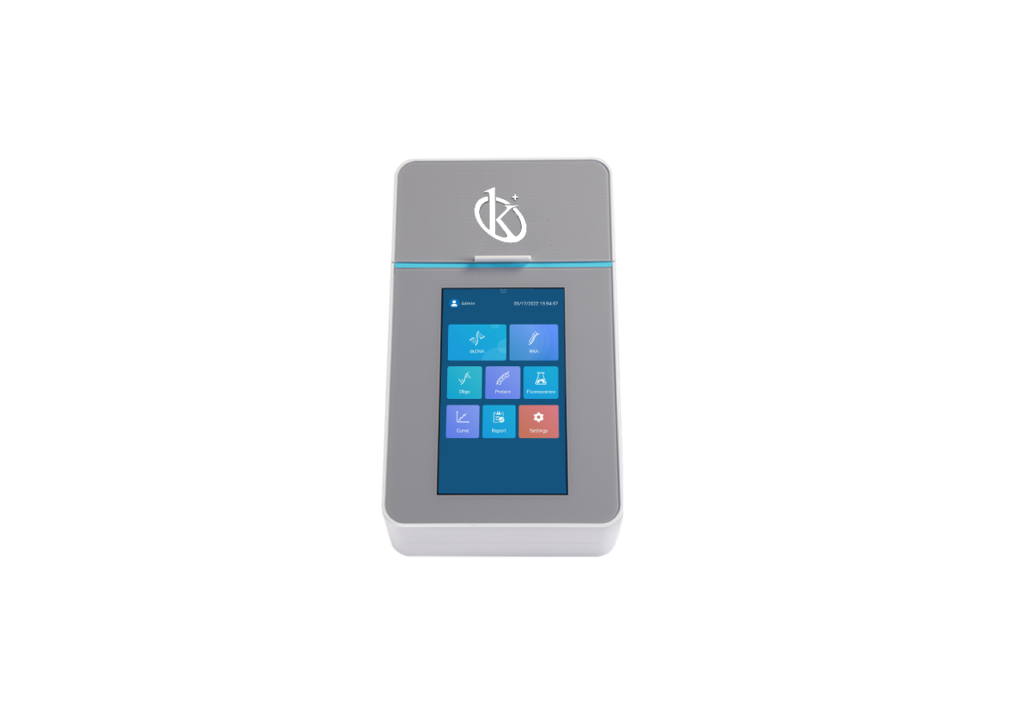To establish the importance of the equipment that forms part of a laboratory and is indispensable, we need to consider its applications and usefulness within it; in the case of Fluorometers, this device measures the parameters of fluorescence: its intensity and the wavelength distribution of the emission spectrum after excitation by a certain spectrum of light.
It is widely used in chemical, biochemical, medical and environmental laboratories; it is capable of measuring the absorbance of all ingredients such as DNA, RNA, among others, of the sample at 260 nm; another application of our fluorometer is that it can measure 0.5 pg/ul which favors the measurement of DNA concentration; we at KALSTEIN offer you a unique model that covers your needs.
What does a fluorometer measure?
The function of this instrument is to measure fluorescence spectrometry, i.e. to analyze the fluorescence of a sample through electromagnetic spectroscopy. Fluorometers are also known as spectrofluorometers or fluorometers; fluorescence is a type of luminescence that is given off by any type of sample, whether gaseous, liquid or solid.
These substances are capable of absorbing electromagnetic radiation and emitting part of this energy in the form of radiation of a different wavelength to that absorbed; the wavelength emitted by a fluorescent substance is greater than that received, so the duration of the whole process of this technique is a few nanoseconds, which is considered instantaneous.
Applications for fluorescent substances
These substances are used in different areas, the most common being in fluorescent tubes, where the tubes contain Argon or Neon, and Mercury inside; where a whole process takes place in which visible wavelength luminescence occurs. Fluorescence is also applied in fields such as analytical chemistry, where fluorescent substances can be detected.
Fluorescent substances can be found in medicine and biochemistry; biological substances can be “tagged” with a fluorescent chemical group, through a simple chemical reaction; DNA can also be detected, and studied; for oil detection, as it emits fluorescence in the brown to bluish range, depending on its composition. There are also applications for studying organic solvents containing fluorescent substances. This is why a fluorometer is necessary in all these fields.
Main parts of a fluorometer
- Radiation source: for requirements that need to cover a wider spectrum of wavelengths, such as a xenon lamp or laser.
- Excitation monochromator: to select the appropriate wavelength for sample excitation
- Emission monochromator: to analyze the emissions produced by the sample’s fluorescence.
- Photomultiplier: through which light waves are received and transformed into a measurable number of “beads”, which are related to the intensity of the light.
Types of fluorometer
Generally speaking, there are two types of fluorometer:
- Filter fluorometers: These filters are used to isolate the incidence of light and the fluorescence of light.
- Spectropofluorometers: A monochromator diffraction grating is used to isolate the incidence of light and the fluorescence of light.
At KALSTEIN, we have a unique model, but with truly wide-ranging features that will meet the needs of your laboratory, no matter what area you’re involved in.
If you’d like to find out more about this equipment, or if you’ve made the decision to buy it, you can do so via our easy and viable online purchasing channels. We invite you to visit our website at HERE and take advantage of the catalog of high quality equipment at the best prices you’ll find on the market, in addition to being top manufacturers, with a strong buy-sell demand worldwide, at KALSTEIN we offer you the best specialists to provide you with the necessary advice, our Laboratory Equipment Company, offers you great advantages of warranty and commitment, ensuring equipment with superior technology and high performance. To find out more about this product range, click HERE

